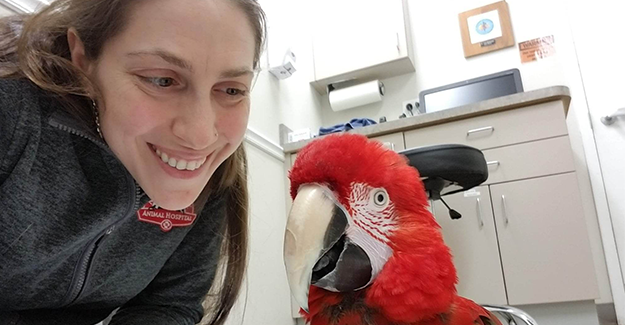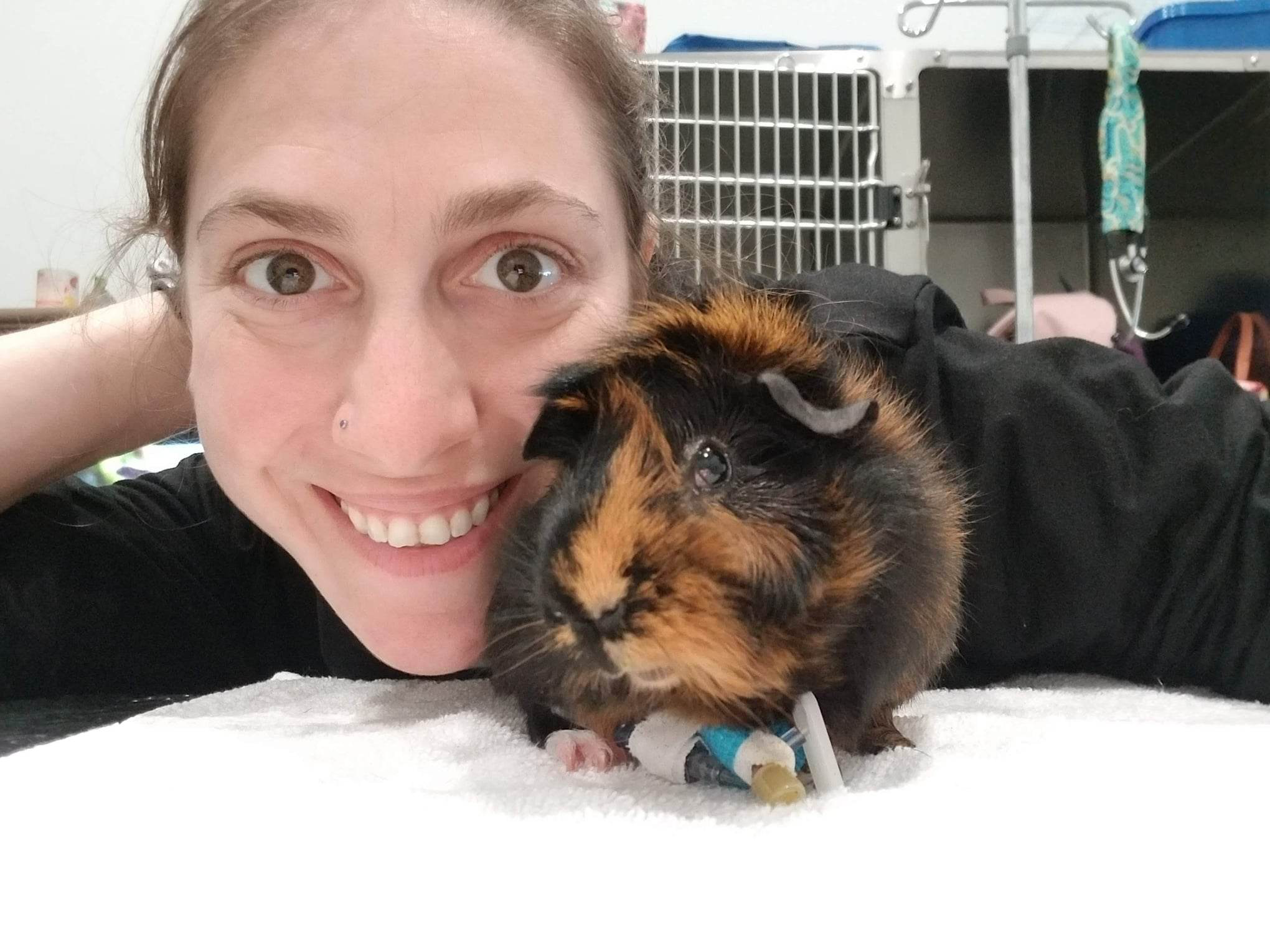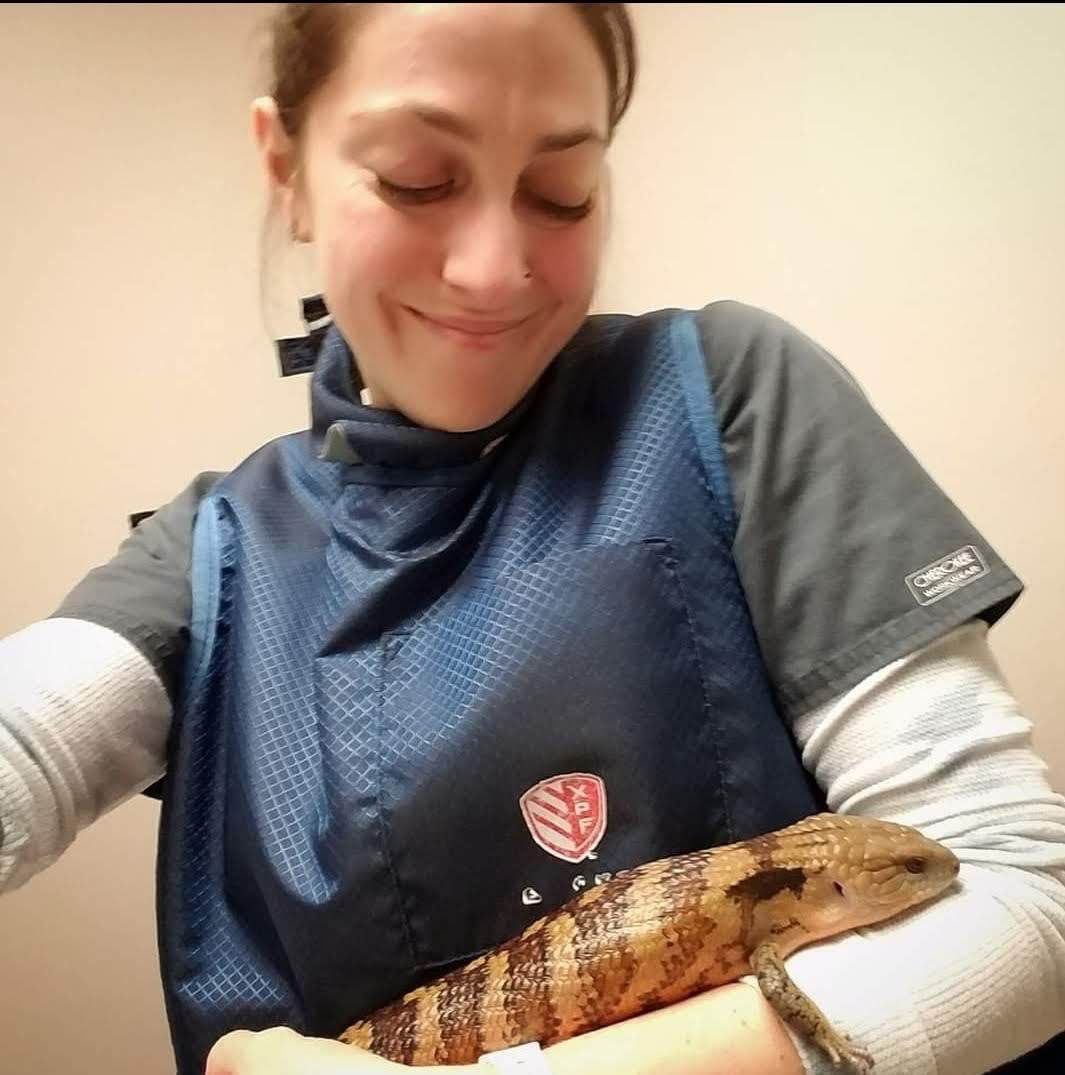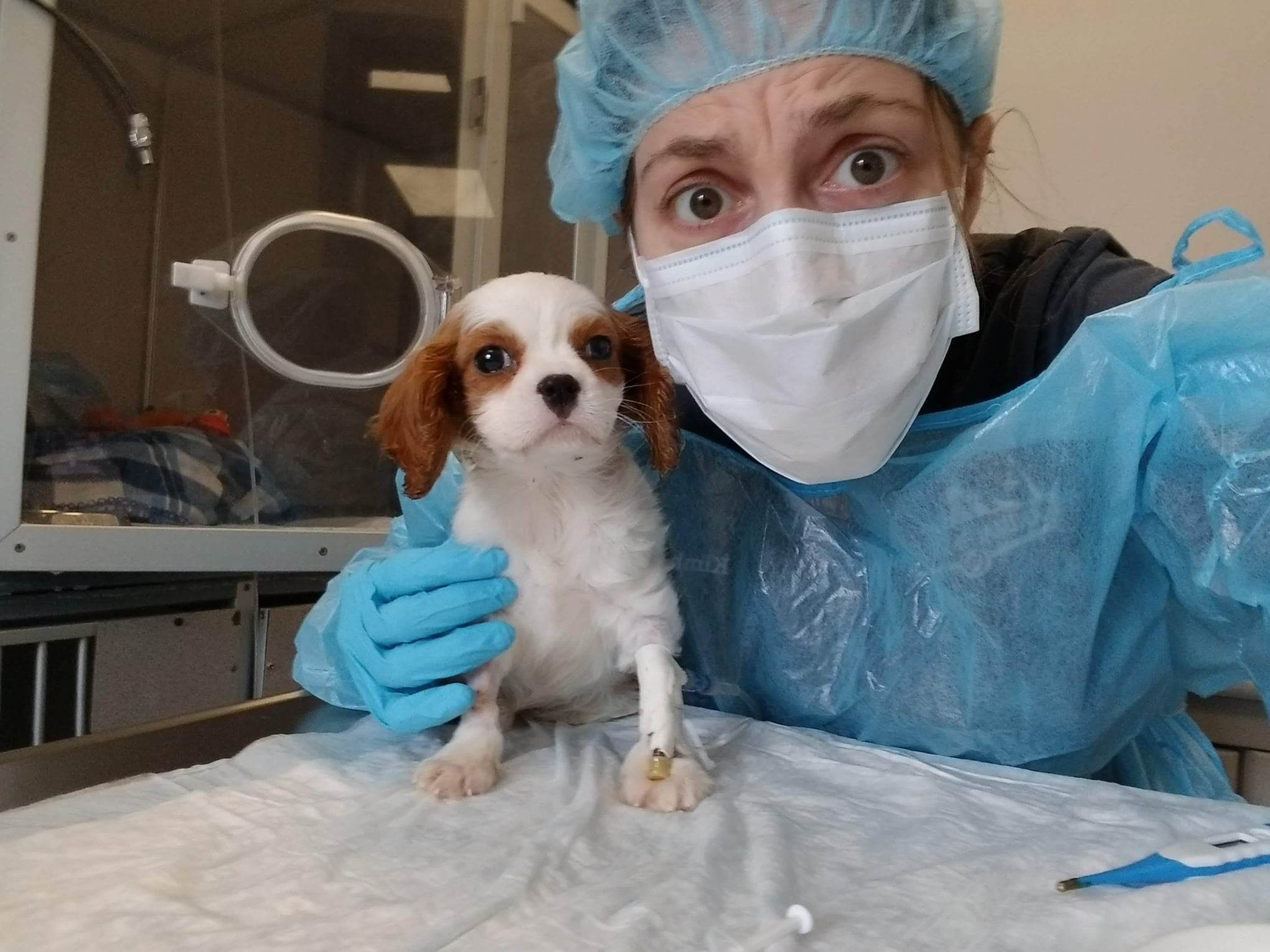Vet Teams IRL: Kimberlee Goldberg, CVT

In the Vet Teams IRL series, Tasha McNerney introduces us to veterinary technicians, customer service representatives, managers, kennel staff, veterinary assistants, and vet tech students working on the frontlines of vet med.
Dear readers, you may know me as an anesthesia nerd, a lover of anesthetizing all species . . . but I have a secret. There is a species that strikes terror in my heart, and surprisingly it’s not a reptile or bird . . . it’s the rabbit!
I know, I know, but I would rather go into the enclosure of an angry osprey than be assigned to a rabbit neuter.
Luckily, I know fantastic technicians like Kimberlee Goldberg, a CVT based out of Medford, New Jersey. Kim is a great resource for all things exotic patients, and I love hearing her stories. I’m excited to let her share some with you too!



Tasha McNerney: So, Kim, we met years ago when you were working at a mixed animal practice, but you have been involved in many facets of animal care. How did you get started?
Kim Goldberg: I've been working in veterinary medicine intermittently for 15 years. I took a break after a car accident and dabbled in other animal-related fields such as grooming, pet sitting, pet store care, and shelter work. My entire life has always been focused on loving animals. I was raised vegetarian by my hippie father and taught that animals are my brothers and sisters. I can't imagine a life void of animals.
TMc: I always love your messages where you send me photos of some chicken or turtle surgery. Of those crazy cases, which ones do you enjoy the most?
KG: I like when people bring us newly acquired animals who just began exhibiting an issue. Be it dysecdysis [an abnormality in the shedding process], anorexia/hyporexia, lethargy . . . I like when they bring their pet in right away. Those are the cases we are likely to save. Often working with exotics especially, people bring their animals in days, weeks, or even months later, and sometimes it's just too late. Being able to get to the bottom of the husbandry issue — as well as any actual health issue — is easier [when the pet is seen right away] and the animal stands a chance. But foreign body surgeries are always fun!
TMc: With the variety of clinics and situations where you have worked, you must have seen some that work well, and some that fall short. What do you think the secret is to a great practice environment?
KM: I think it's important to be able to feel like you have a voice wherever you work. I've worked in clinics [where clinicians] disregard my experiences or questions because I am just the tech. Like in a human hospital, we are the voice for our patients. If we think they are painful we should be able to express that. We are a team, and it’s up to us to work together to provide the best patient care. Just advocate calmly and if you're in a good environment, the clinicians will appreciate you. Together you can make all the difference.
TMc: Do you have an example of when your advocacy helped a patient?
KG: Yes! A chicken who presented for an injured globe and needed an enucleation. My doc was open to my request for a butorphanol CRI [continuous rate infusion], and the chicken did awesome! It was my first time doing a CRI on a chicken, but I had just read about CRIs in exotics in the Journal of Exotic Pet Medicine and she was down to try. The patient maintained spontaneous respirations and required very low levels of gas anesthetic. She woke up nicely and went home a few hours later like nothing happened!
TMc: Looking forward, what keeps you in vet med? What things do you see us doing right?
KG: What keeps me optimistic is finally working with a team of techs and veterinarians who are open for change and to other ways of doing things . . . [they see] that there's no one-size-fits-all in vet med. . . or anything really: My-one-size-fits-all pajamas are far too big!
Being able to share my experiences without judgment and having discussions on our treatment plan together as a team has been really enlightening. Inspiring each other to grow and not allowing knowledge-guarding will allow our profession to continue to flourish.
Tasha McNerney BS, CVT, CVPP, VTS (Anesthesia and Analgesia) is a certified veterinary technician from Glenside, Pennsylvania. She is also a certified veterinary pain practitioner and works closely with the IVAPM to educate the public about animal pain awareness. McNerney has authored numerous articles on anesthesia and analgesia topics for veterinary professionals and pet owners.
Photos courtesy of Kimberlee Goldberg.
Disclaimer: The views expressed, and topics discussed, in any NEWStat column or article are intended to inform, educate, or entertain, and do not represent an official position by the American Animal Hospital Association (AAHA) or its Board of Directors.



